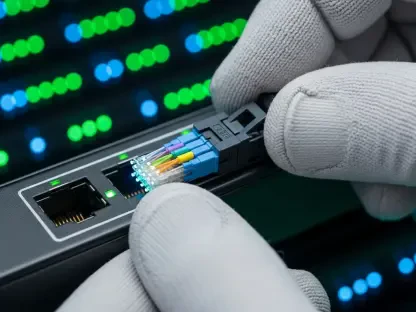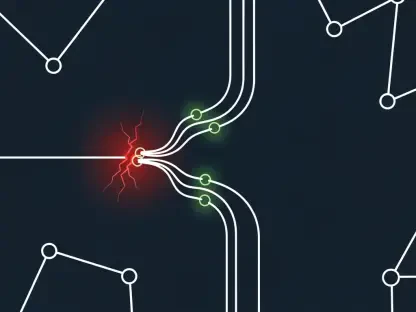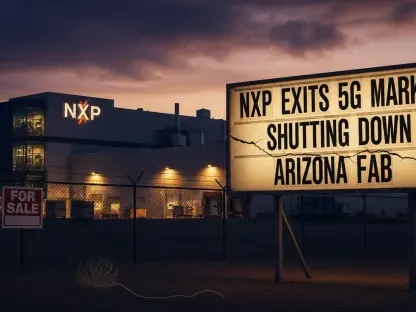I’m thrilled to sit down with Vladislav Zaimov, a seasoned telecommunications specialist with deep expertise in enterprise telecommunications and risk management of vulnerable networks. With a career dedicated to advancing wireless technology and securing robust network solutions, Vladislav offers a unique perspective on the latest innovations and challenges in the industry. Today, we’ll dive into topics like the transformative power of 5G partnerships, the intricacies of managing massive events through advanced network capabilities, the role of AI in optimizing performance, and the future of customer experiences in telecom. Let’s explore how these developments are shaping connectivity on a grand scale.
How does a multi-year 5G partnership with a high-profile entity like Formula 1 impact a telecommunications company’s strategy and visibility?
Such a partnership is a game-changer. It positions the company at the forefront of cutting-edge technology, especially with 5G, which is all about speed, low latency, and immersive experiences. Being the exclusive 5G partner for Formula 1 means not just branding visibility at globally watched events, but also a chance to showcase real-world applications of 5G—like live broadcasts and enhanced fan interactions. Strategically, it pushes the company to innovate faster, ensuring the network can handle the intense demands of a live sports event while setting a benchmark for reliability and performance that resonates with enterprise and consumer clients alike.
What kinds of 5G innovations can fans and attendees expect at major racing events in the coming years?
Fans can look forward to a whole new level of engagement. We’re talking about ultra-high-definition live streaming with virtually no delay, augmented reality overlays for real-time race stats, and interactive experiences like choosing camera angles from your phone. Behind the scenes, 5G enables seamless data transfer for team operations and broadcast crews, ensuring every moment is captured flawlessly. These innovations aim to make attending a race feel like you’re in the driver’s seat, no matter where you’re sitting.
How do you ensure a network can handle the massive influx of users and data during a large-scale event like a Grand Prix?
It’s all about preparation and layering technology. We deploy a robust 5G infrastructure tailored to the event’s footprint, using a mix of macro towers and small cells to cover high-density areas. Network slicing plays a huge role—it lets us allocate bandwidth dynamically for different needs, like fan connectivity, team communications, and point-of-sale systems. We also ramp up capacity in advance, stress-test the system with simulations, and have real-time monitoring to adjust on the fly. It’s a complex orchestration, but it ensures everyone stays connected without a hitch.
Can you explain the significance of mid-band spectrum, like the 2.5 GHz range, in supporting such demanding environments?
Mid-band spectrum, like 2.5 GHz, is the sweet spot for 5G. It offers a balance between coverage and speed—wider reach than high-band millimeter wave, but faster than low-band frequencies. For an event like a Grand Prix, it’s critical because it can handle a huge number of simultaneous connections in a crowded area without sacrificing performance. It’s ideal for delivering high-quality video streams to thousands of fans while supporting operational data needs. Without this spectrum, you’d struggle to meet the density and throughput demands of a modern event.
How does AI contribute to optimizing network performance for something as dynamic as a racing event?
AI is a powerful tool for anticipating and managing network loads. It analyzes historical data from past events—like traffic patterns and peak usage times—to predict where and when demand will spike. During the event, AI helps us optimize resource allocation in real time, identifying congestion before it becomes a problem and rerouting data as needed. It’s like having a super-intelligent traffic cop for the network, ensuring smooth flow even under pressure. Over time, as we gather more data, these models get sharper, making each event smoother than the last.
What challenges do you face in predicting network traffic for large events, and how do you address them?
Predicting traffic is tricky because human behavior isn’t always consistent. You can have unexpected spikes if a race moment goes viral and everyone starts streaming or posting at once. We tackle this by building models based on past events, factoring in variables like attendance, social media trends, and even weather. We also over-provision capacity as a buffer and use real-time analytics to adapt on the spot. It’s not foolproof, but with each event, our forecasts get more refined, reducing the guesswork.
How are telecom companies using technology to simplify the process of switching carriers for consumers?
The focus is on removing friction. New programs leverage apps and AI to streamline the switch—think assessing your current plan, comparing it to better options, and transferring your data in minutes, all from your phone. AI tools can analyze bills from other carriers, highlight savings, and even guide you through porting numbers or setting up devices. The goal is to make switching feel effortless, addressing a major pain point since so few people change carriers due to the hassle. It’s about empowering customers with transparency and speed.
What’s your forecast for the role of AI in shaping the future of telecommunications, especially in handling emerging demands?
I believe AI will become the backbone of telecom operations in the next decade. It’s not just about network optimization—it’ll drive personalized customer experiences, predict maintenance needs before failures occur, and manage the massive data loads from emerging tech like IoT and smart cities. As AI use cases grow in everyday life, networks will need to adapt to unpredictable demands, and AI will be key to scaling efficiently. It won’t happen overnight, but the foundation is being laid now, and companies that invest early will lead the pack.









